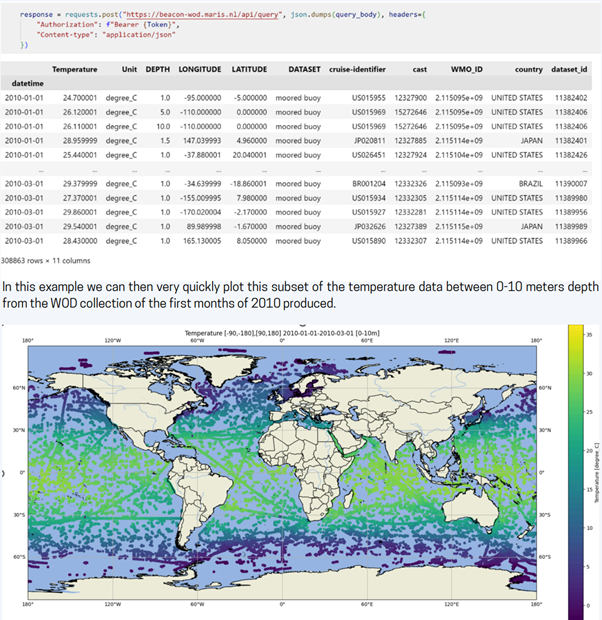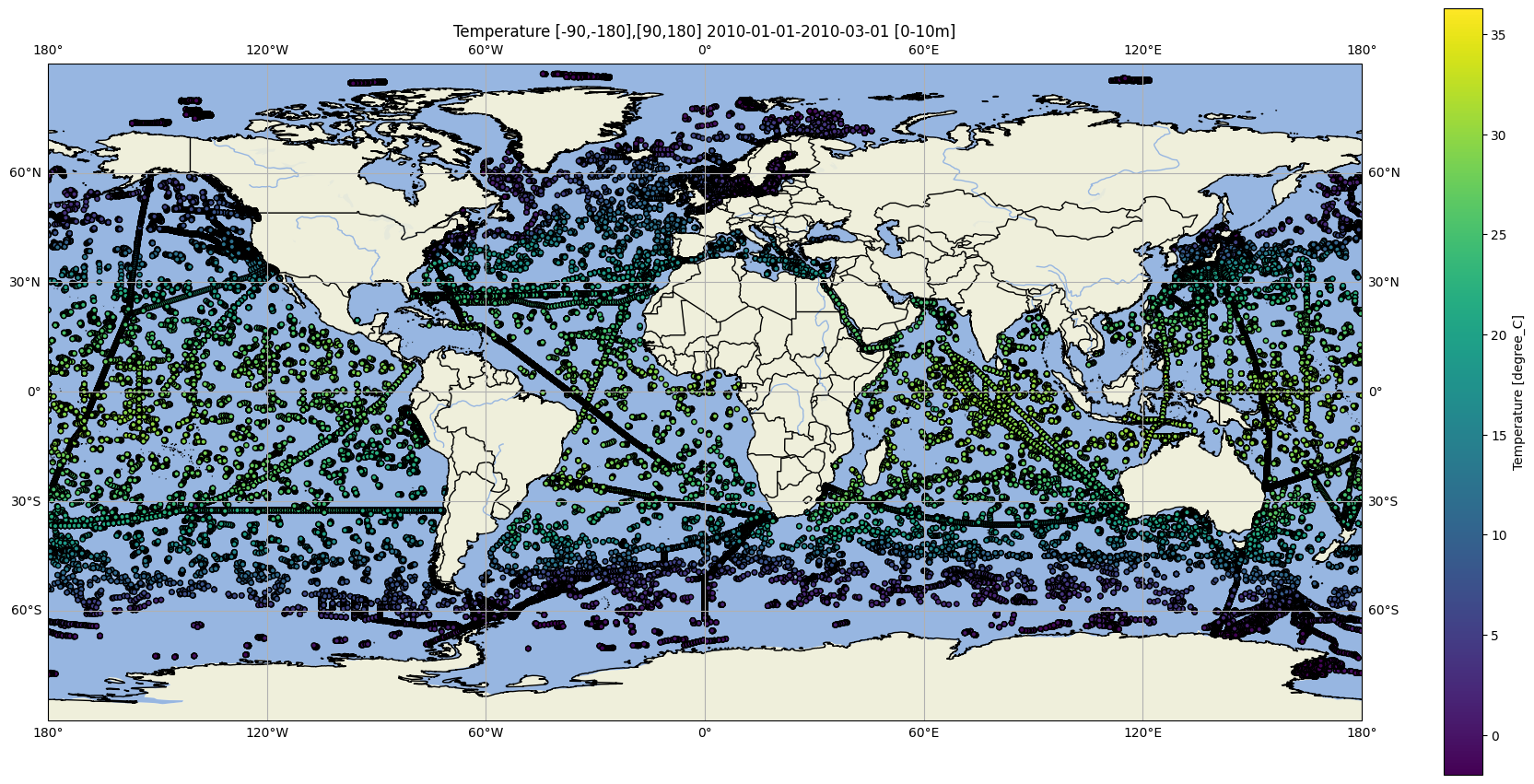Beacon is able to provide users with fast and easy access to multidisciplinary data originating from large collections, on the fly with high performance, and extract specific data based on the user’s request.
This software has been customised and deployed in the Blue-Cloud2026 project, FAIR-EASE, among other projects including national ones and is designed to return one single harmonised file as output, regardless of whether the input contains different data types. It allows everyone to set-up their own Beacon ‘instance’ to enhance the access to their data or use existing Beacon instances from well-known data infrastructures such as Euro-Argo or the World Ocean Database for fast and easy access to harmonized data subsets.
More technical details, example applications and general information on Beacon can be found on the website, documentation and on Github.
In order to use Beacon for providing access to harmonised subsets, a set of in total 8 monolithic Beacon instances were set-up for relevant data collections such as the WOD, Copernicus Marine Cora, Euro-Argo, SeaDataNet, and more. The term ‘monolithic’ is used to indicate that the Beacon instance concerns one data infrastructure. After initial configuration at a MARIS server, all 8 instances have been deployed operationally, with Argo also being available on the UCA Testbed. All have been integrated with the D4Science federated AAI service, by which access is arranged. All Beacon instances also have been provided with its own dedicated Jupyter-notebook which sits on the Beacon API and which makes it easier for the users to interact. The notebooks already contain several queries and users can adapt their own notebooks.
The following figure shows access to the Argo data collection that is hosted on the UCA Testbed. The user is able to retrieve on-the-fly access to Argo data following their query criteria in less than 10 seconds. The data can be stored in different output formats and easily converted to a dataframe as depicted here for further analysis.

Access to Argo collection via Beacon
The following figure shows an example application of Beacon for access to the WOD. By sending a POST request to the Beacon endpoint, with a set of columns and filters, the user retrieves on-the-fly in a few seconds all data in one single file, fitting the filter criteria. This is then available for further processing. Here a simple plot is shown for temperature data from the WOD.

Access to World Ocean Database collection via Beacon